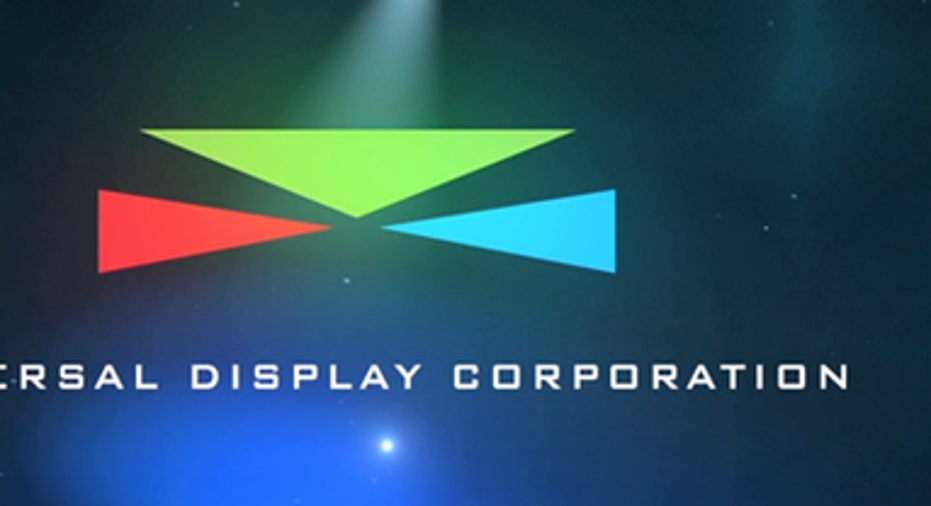What to Watch When Universal Display Corporation Reports Q4 Earnings

Image source: Universal Display Corporation
Universal Display Corporation is set to release fourth-quarter 2015 earnings after the market closes Thursday, Feb. 25, 2016. With shares of the OLED technologist up more than 30% since it announcedstrong third-quarter results in early November, bullish investors would love for another solid performance to extend their gains.
That's not to say it's been a smooth ride since last quarter. In December, the company suffered the ire of a questionable short-seller's report that asserted, among other things, that investors should be worried by an impending patent cliff, lumpy quarterly earnings, and yet-to-be-confirmed news of Apple expanding its use of OLED displays from their current role in "just" its various Apple Watch models. I've already taken some time to rebut those claims, but earlier this month Universal Display stock alsoplunged despite no company-specific news,as high-flying tech stocks were dragged down by the broader market.
On the headline numbersThis week, however, Universal Display has the chance to ease investors' concerns by adding perspective and clarity for its future. So what, exactly, should investors be watching when its fourth-quarter report hits the wires?
Universal Display's latest guidance calls for full-year 2015 revenue to be roughly $200 million, plus or minus 3%, representing modest year-over-year growth of roughly 4.8%.
On royalty and material sales
Universal Display's phosphorescent OLED emitter materials. Image source: Universal Display
Per the terms of Universal Display's patent license and material supply agreement with Samsung Display, this quarter will include one of Samsung's twice-per-year $30 million license fees, which Universal Display receives in the second and fourth quarters each year. Keeping in mind that's up from $25 million every other quarter in 2014, and $20 million in 2013, these biannual payments will likely increase another $5 million, to $30 million, in the second and fourth quarters of 2016.
Meanwhile, recall in the absence of the lump sum license payment last quarter, Universal Display's royalty and license sales actuallyfell 2.5% year over year in Q3, to roughly $5.2 million. But that also reflected a one-quarter lag in running royalties paid on licensed OLED products covered under Universal Display's long-term deal with LG Display , which currently stands as its second-largest customer behind Samsung. Considering LG Display recently revealed around 50% of its total OLED TV unit shipments this year were sold in the fourth quarter, don't be surprised if that lag results in similarly underwhelming year-over-year performance in royalties for UDC in Q4.
Next, we should receive details from Universal Display on its OLED material sales. Last quarter, material sales climbed 24% year over year, to $34.1 million, as a 56% increase in UDC's phosphorescent OLED emitter materials, to $31.5 million, was partially offset by a 63% decline in the much smaller host material sales segment to $2.7 million. Because Universal Display's host materials are notprotected under its broad OLED-centric patent portfolio, thelatter was primarily caused by Samsung's decision to source its own host materials through an affiliate company it acquired in 2014 (formerly known as Cheil Industries), which meant excluding UDC's host materials from its latest devices. Over the long-term, this should have little effect on Universal Display's business as its emitter sales have always represented its primary source of growth, and continue to enjoy increasing demand from a growing number of OEMs.
Looking aheadSpeaking of which, during the subsequent conference call management will almost certainly offer their thoughts on traction with new and expanded customer relationships. Of course, Universal Display can't speak for its customers directly, but management has raised my eyebrows more than once in past conference calls with less-than-subtle hints about what's to come, including a curious comment from CEO Steve Abramson in mid 2013 regarding a patent Apple had recently filed for a flexible wrist-worn OLED display -- nearly two years before Apple Watch was officially released. Most recently in November, Universal Display CFO Sid Rosenblatt even asserted an OLED iPhone from Apple was "only a matter of time," and more than anything a function of how long it would take suppliers to build the OLED manufacturing capacity required to fulfill demand for such a device.
But it's not all about Apple. In the meantime, Rosenblatt also insisted in November we will see revenue growth overall in 2016, thanks to a combination of LG Display's much higher manufacturing capacity for the full year, Samsung Display's decision to supplement demand by becoming more of a "merchant of displays" to non-Samsung Electronics customers, and several emerging players set to serve larger roles in the global OLED display market this year.
What remains to be seen, however, is exactly how much growth to which that will translate in the coming year. For perspective -- and assuming Universal Display hits the mid-point of 2015 guidance -- analysts' consensus estimates call for 2016 revenue to climb roughly 23% to just over $246 million. Regardless of whether Universal Display lives up to those expectations, however, most important in these early stages will be any cues as to whether its long-term growth story remains intact.
The article What to Watch When Universal Display Corporation Reports Q4 Earnings originally appeared on Fool.com.
Steve Symington owns shares of Apple and Universal Display. The Motley Fool owns shares of and recommends Apple and Universal Display. Try any of our Foolish newsletter services free for 30 days. We Fools may not all hold the same opinions, but we all believe that considering a diverse range of insights makes us better investors. The Motley Fool has a disclosure policy.
Copyright 1995 - 2016 The Motley Fool, LLC. All rights reserved. The Motley Fool has a disclosure policy.